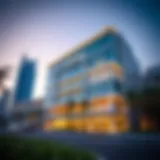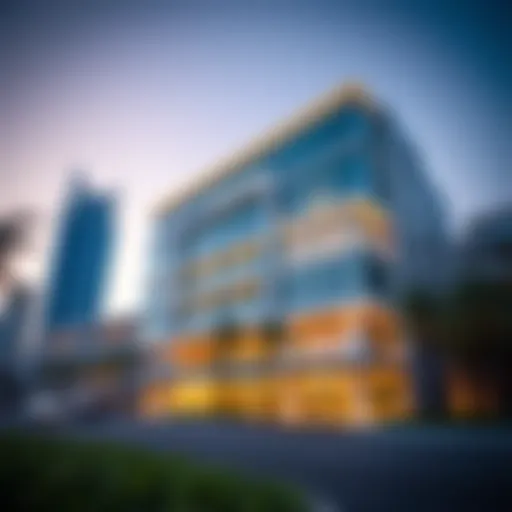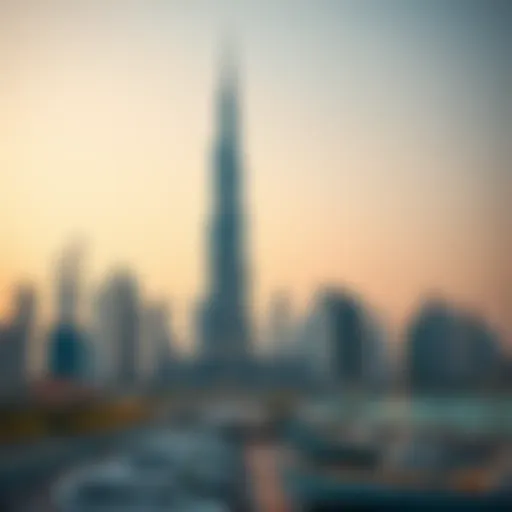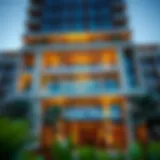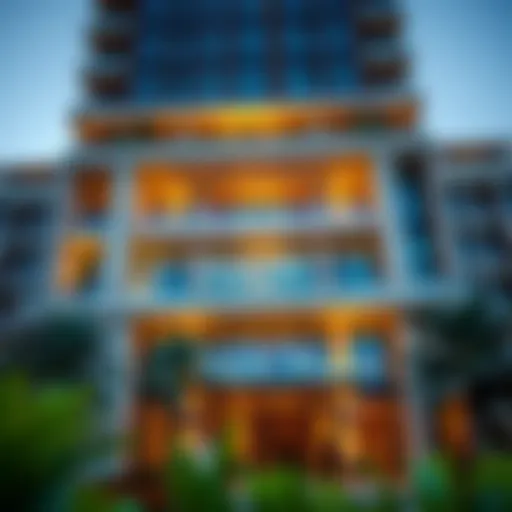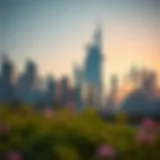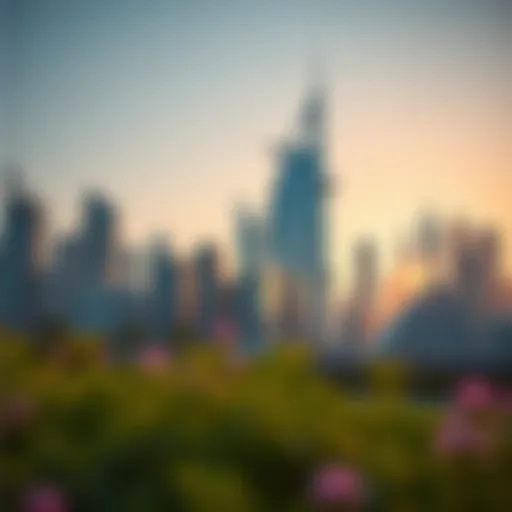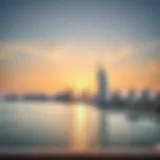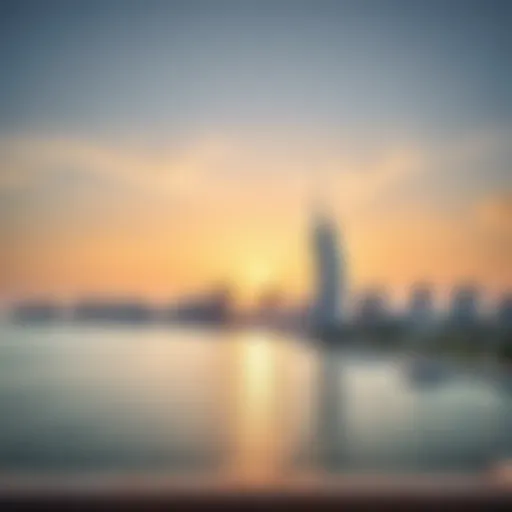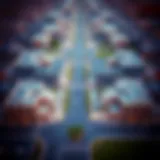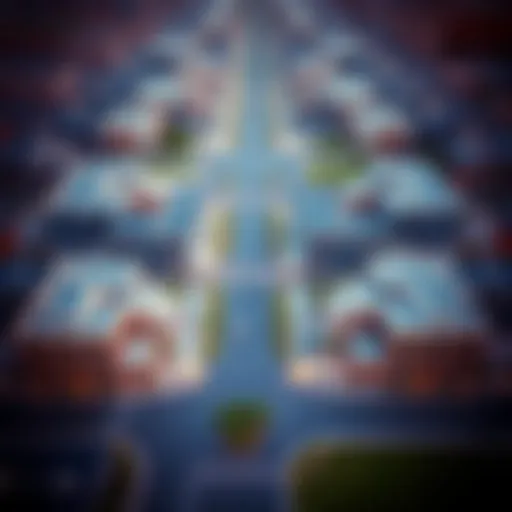Empire Development in Dubai: A Focus on JVC
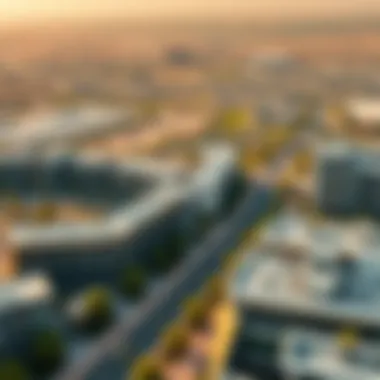

Intro
Dubai’s skyline is a vivid testament to aspiration and growth, but behind the glimmering facade lies a compelling tale of urban evolution. One of the most intriguing areas contributing to this narrative is Jumeirah Village Circle (JVC). As a unique blend of residential and commercial spaces, JVC has emerged as more than just a locale; it is a living example of strategic planning and development initiatives that reflect broader market evolutions within Dubai. This article aims to dissect the nuances of empire development in JVC, providing insights that are indispensable for investors, homeowners, and real estate professionals alike.
Understanding JVC requires diving into historical contexts that have shaped its emergence, the current market trends that indicate its vitality, as well as future forecasts that promise further evolution. With the region poised for continual transformation, being informed is not just beneficial; it's crucial. Whether it's examining current real estate trends or diving deep into the specifics of property types, this article promises a comprehensive understanding of what JVC signifies in the grand scheme of Dubai’s sprawling urban development.
Intro to Empire Development
Exploring the notion of empire development in Dubai is no small feat. It is a fascinating tale shaped by the rapid evolution of a city that has transitioned from a modest fishing village to a global metropolis in just a few decades. Now, Jumeirah Village Circle (JVC) is at the heart of this transformation, serving as a prime example of how urban planning, investment, and community engagement intertwine to form a thriving environment.
Importantly, empire development in this context goes beyond mere construction projects or economic statistics. It's about understanding the socio-economic fabric that binds the community together. This article seeks to dissect various elements, including the infrastructure, real estate dynamics, and societal contributions that JVC brings to Dubai's landscape.
Benefits of diving into this topic include:
- Awareness: Investors and stakeholders gain an insider view of JVC's potential and how it aligns with broader economic trends.
- Investment Clarity: Homebuyers can assess the long-term value of properties through informed analysis of current developments.
- Strategic Planning: Developers and agents can identify opportunities and challenges, allowing them to navigate the market with deft precision.
As we unfold the layers of JVC, from its geographic advantages to its community initiatives, this article will offer an in-depth understanding of why JVC represents a microcosm of Dubai's empire development. In doing so, it will illuminate pathways for investment and engagement that are as promising as they are insightful.
"In every flourishing empire lies the story of its neighborhoods—the heartbeats that pulse with life, culture, and opportunity."
Ultimately, this exploration aims to benefit not only investors and developers but also anyone with a keen interest in the future of urban development in one of the world's most dynamic cities. Let's embark on this journey and analyze the intricate dance of growth, stability, and community that defines JVC today.
Historical Context of Dubai's Urban Growth
The urban growth of Dubai is a fascinating tale of transformation that is intricately tied to its historical context. Understanding this journey is not only relevant but paramount for grasping the present landscape and the future possibilities within Jumeirah Village Circle (JVC). By viewing Dubai through the lens of its past, investors, homebuyers, and industry professionals can appreciate the factors that shaped its current real estate market and urban design.
Foundation of Modern Dubai
The foundation of modern Dubai can be traced back to the early 20th century when the discovery of oil in the region altered the course of its economic destiny. Prior to the oil boom, Dubai was primarily a modest fishing village with a thriving pearl trade. The modest incomes from fishing and trading were sufficient for the local population, but the growth potential was significantly limited.
With the oil discoveries in the 1960s, the emirate experienced a rapid economic transformation. Notably, Sheikh Rashid bin Saeed Al Maktoum, then the ruler, recognized the importance of diversification beyond oil. His vision to develop infrastructure led to the construction of roads, buildings, and neighborhoods. These developments were not just for show; they aimed to position Dubai as a commercial hub in the region, eventually leading to the creation of a bustling metropolis.
The strategic investments in infrastructure during this period laid the groundwork for various sectors, including tourism and real estate. For instance, landmarks like the Dubai World Trade Centre set the tone for a skyline that would later include architectural marvels. The globalization experienced in subsequent decades solidified Dubai's standing as a pivotal trading point between the East and West.
Milestones in Urban Development
Dubai’s urban development can be characterized by a series of significant milestones that have defined its growth trajectory:
- Creation of Free Zones: The introduction of free trade zones, such as the Jebel Ali Free Zone, attracted international businesses and investors. This policy shift led to a surge in economic activities and job creation.
- Burj Khalifa Construction: Completed in 2010, the Burj Khalifa was a game changer. Not only did it symbolize Dubai’s ambition, but it also sparked a new wave of tourism and investment, enhancing the city’s profile on a global scale.
- Launch of Palm Jumeirah: This iconic man-made island, completed in the early 2000s, revolutionized the real estate market. It pushed the boundaries of luxury living and became a global benchmark for innovative real estate development.
- Smart City Initiatives: Recently, Dubai has taken strides towards becoming a smart city, integrating technology into urban planning. This initiative includes innovations in transportation and sustainable living, appealing to environmentally conscious investors and residents alike.
In summary, the historical context of Dubai's urban growth reflects a remarkable evolution driven by vision and strategic planning. Acknowledging this backdrop is crucial for stakeholders in JVC, as it frames the ongoing development and sets the stage for future possibilities.
Overview of Jumeirah Village Circle (JVC)
Jumeirah Village Circle, often referred to as JVC, stands out as an integral part of Dubai's expansive urban tapestry. Known for its strategic location and a mix of residential and commercial offerings, JVC has become a beacon for investors, residents, and those seeking to tap into Dubai's thriving real estate market. This section delves into the unique attributes of JVC, unveiling its significance within the broader scope of Dubai's development.
The appeal of JVC lies not only in its convenient setup but also in its community-centered approach. Developed with the vision of fostering a harmonious living environment, this area encapsulates the best of both worlds: it harmonizes urban conveniences with a sense of belonging.
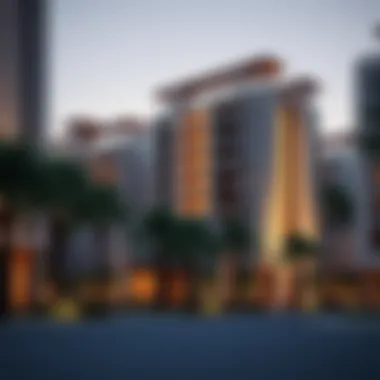
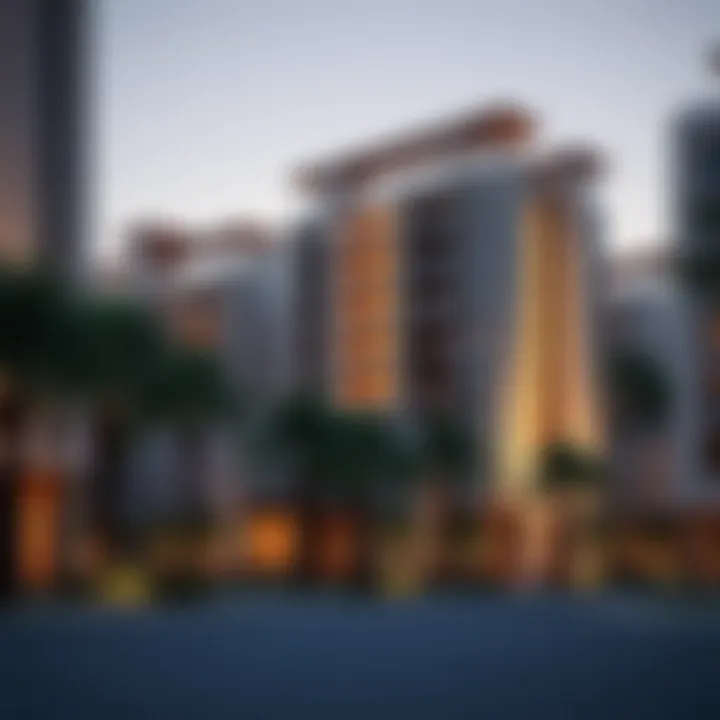
Geographic and Demographic Profile
Located in the heart of Dubai, Jumeirah Village Circle enjoys an advantageous position that connects it to various key areas such as Dubai Marina, Downtown Dubai, and the Expo 2020 site. Its strategic layout promotes accessibility, making it a sought-after locale for families, professionals, and investors alike.
The demographic profile is diverse, comprising expatriates from numerous nationalities, which infuses vibrancy into the local culture. As a predominantly residential community, the population here skews younger, with many families and professionals drawn to its amenities and community spirit. The array of housing options caters to different income brackets, making JVC attractive on multiple fronts.
Key Features and Amenities
- Community Parks
Community parks in JVC are not just patches of greenery; they serve as pivotal spaces that nurture community bonds. These parks are designed to provide recreational areas for families and young children, featuring playgrounds, walking tracks, and picnic spots. One standout characteristic of these parks is their accessibility—they are interspersed throughout the neighborhood, ensuring that every resident is within a short walking distance. The benefit of such spaces contributes significantly to residents’ quality of life, fostering outdoor activities and community gatherings. - Schools and Educational Institutions
Education is a cornerstone for families, and JVC rises to the occasion with a selection of schools and educational institutions designed to cater to the diverse needs of its population. The proximity of quality schools, such as Jumeirah International Nursery and Nord Anglia International School, is a defining feature that parents find appealing. This access not only alleviates daily commutes but also ensures that families can provide their children with excellent educational foundations. It positions JVC as a desirable location for long-term living where education values are high. - Retail and Dining Options
The retail and dining landscape in JVC is rich and varied. Local shopping centers, such as the Circle Mall, feature a blend of international brands and local boutiques, providing residents with convenient shopping alternatives. Restaurants and cafes dot the neighborhood, offering culinary experiences that range from local delicacies to international cuisines. The distinct allure of these options is that they engender social culure, turning routine errands into an enjoyable outing. For investors, the vibrant commercial activity presents solid opportunities as consumer demands increase in this thriving community.
In summary, Jumeirah Village Circle is more than a residential community; it encapsulates a lifestyle that offers accessibility, education, social interactions, and community growth. As the area continues to develop, it remains a focal point for those keen on engaging with Dubai’s dynamic urban environment.
Investment Potential in JVC
The Jumeirah Village Circle (JVC) stands as a beacon of opportunity for those interested in the dynamic real estate market of Dubai. This section delves into the critical aspects of investment potential in JVC, highlighting the factors that make it an attractive destination for both seasoned investors and first-time homebuyers.
Real Estate Trends in JVC
Over the years, JVC has evolved from a somewhat undervalued area to a hotspot teeming with activity. The rise in property values is not merely a consequence of random fluctuations; rather, it has been driven by several key factors:
- Increased demand for affordable housing: With Dubai's overall real estate market continuing to thrive, JVC offers competitive prices, appealing to a diverse demographic. This affordability has attracted a mix of expatriates and locals, further buoying the demand.
- Diverse property options: Investors can choose from a host of property types in JVC, including apartments, villas, and townhouses. This diverse range allows for personalized investment strategies, catering to different tastes and budgets.
- Growing rental prices: The rising trend in rental prices adds another layer to its investment appeal. Many consider JVC a lucrative buy-to-let market, where potential landlords can see a tangible return on investment.
Indeed, according to various real estate analyses, properties in JVC have exhibited a noticeable appreciation rate. This uptick only emphasizes the need for potential investors to act swiftly, as opportunities here may not last long.
Attractiveness for Investors
JVC isn't just another spot on the map; it has become a compelling scene for investment. The factors contributing to its attractiveness include:
- Infrastructure Development: JVC benefits from high-quality infrastructure, including roads and public transportation, which enhances its connectivity to major landmarks in Dubai. The upcoming expansions planned for road networks and transit lines hint at even greater accessibility in the near future.
- Mixed-Use Developments: The planning for mixed-use spaces within JVC adds to its appeal. Residents can expect not only homes but also retail spaces, entertainment zones, and office areas within close reach. Such arrangements offer convenience and promote a vibrant community life.
- Family-Friendly Environment: The presence of schools, parks, and healthcare facilities makes JVC ideal for families. Neighborhoods that prioritize quality of life generally witness higher demand, and JVC is no slouch in this regard.
- Regulatory Framework: Dubai's transparent real estate laws and regulations operate in favor of foreign investors, providing safety and stability in their investments. Bonuses like long-term residency options for property owners only sweeten the deal.
"Investing in JVC today is not just about seizing immediate opportunities but positioning oneself for long-term growth in a continually evolving market."
In summary, the investment potential in JVC is heightened by its evolving landscape, promising future growth, and an eclectic mix of lifestyle options. Together, these elements coalesce to craft not only a profitable investment opportunity but also a desirable living environment.
Infrastructure Development in JVC
Infrastructure development serves as the backbone of any urban area, and Jumeirah Village Circle (JVC) is no exception. This flourishing district in Dubai is a prime example of how strategic investment and planning can foster growth, enhance quality of life, and create vibrant communities. As Dubai continues to carve its identity on the global stage, the infrastructure in JVC is critical not just for current inhabitants but also for attracting potential investors and homebuyers.
Transportation and Accessibility
When one thinks of urban living, the ease of getting around is often at the top of the list. JVC's transportation framework is designed with connectivity in mind. The location is strategically nestled between major highways, making accessibility straightforward for both private vehicles and public transport users. The immediate vicinity is served by Sheikh Mohammed Bin Zayed Road, which connects JVC to various key areas across Dubai. Moreover, the roadways are well-maintained, with ample signage that avoids any sense of confusion for first-time visitors.
Public transport options are also on the rise. There's increasing momentum behind plans for bus routes that will directly serve JVC, offering a convenient solution for residents and commuters alike. Recently, discussions about the extension of the Dubai Metro to include a station within or near JVC have gained traction. Such a move would dramatically heighten the potential of JVC as a residential and business hub, making the area even more appealing for investors.
Advantages of robust transportation and accessibility in JVC include:
- Increased Property Values: Easy access usually translates to higher demand, pushing property values up.
- Attraction of Businesses: Companies often seek locations with good transportation links, and accessible areas are naturally more appealing.
- Improved Quality of Life: For residents, avoiding traffic and having multiple options for mobility enhances daily living.
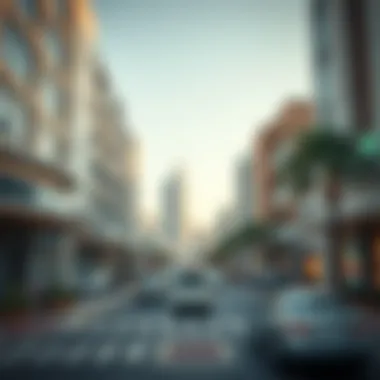
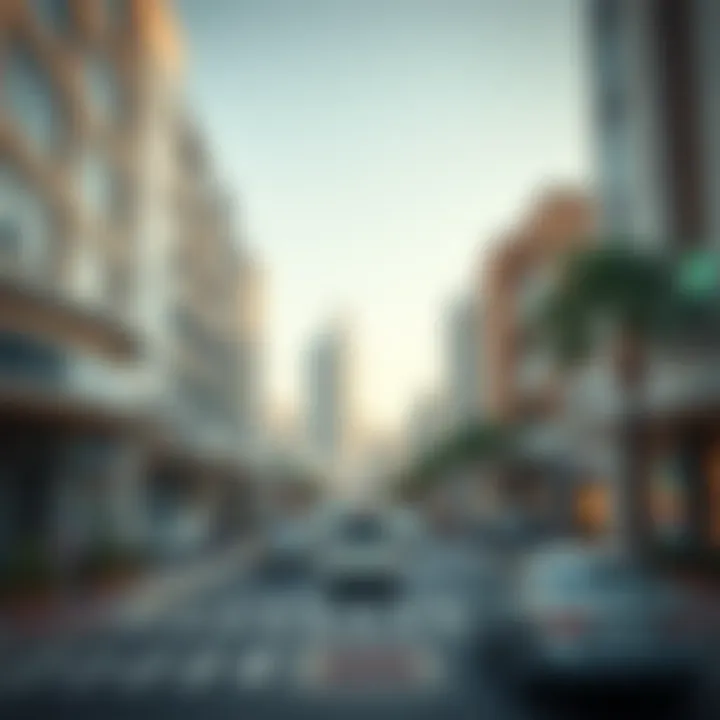
Utilities and Services
The importance of utilities and services in supporting a thriving community cannot be understated. In JVC, modern infrastructure includes essential utilities such as reliable water supply, electricity, and waste management services that meet the needs of the area. The commitment to ensuring that each household has access to high-quality utilities adds another layer of desirability to the area.
Additionally, JVC prides itself on having a well-planned service infrastructure. Residents benefit from high-speed internet connectivity, which is crucial in today's digital age. Many local businesses and remote workers are attracted to locations where internet access is not a concern. This becomes a key selling point for potential homebuyers.
Services such as maintenance management for public spaces, waste disposal systems, and efficient road maintenance contribute positively to residents' quality of life. These considerations include:
- Enhanced Safety Standards: With proper utilities in place, safety measures can be maintained effectively.
- Sustainability Efforts: Merging technology with service management means that there are ongoing efforts to create more sustainable practices in waste management and energy consumption.
- Accessibility of Emergency Services: Well-developed infrastructure ensures that emergency services can operate effectively, adding another layer of safety for residents.
Investing in the right infrastructure is not just about fulfilling immediate needs; it's about laying the foundation for future prosperity.
Challenges in JVC Development
The development landscape in Jumeirah Village Circle (JVC) is marked by a variety of challenges, intricately linked to the broader context of urban expansion in Dubai. Navigating these hurdles is essential for both stakeholders and potential investors to glean a comprehensive understanding of the region's potential. This section addresses how external factors such as regulatory frameworks and market dynamics play a significant role in shaping the future of JVC.
Regulatory and Policy Issues
At the forefront of the development challenges in JVC are the regulatory and policy issues that often hinder progress. Regulatory frameworks can either act as a catalyst or a roadblock depending on how they are structured and enforced. In a rapidly transforming environment like Dubai, compliance with local policies is crucial. Regulations imposed by various bodies, such as the Dubai Land Department and the Dubai Economic Department, can often lead to convoluted processes for securing necessary approvals and licenses.
Developers must stay informed about changing laws that impact land use and construction standards. For instance, Dubai’s recent push for sustainable building practices has introduced stricter guidelines that require developers to incorporate environmentally friendly technologies. While these policies are beneficial for long-term sustainability, they can extend project timelines and inflate costs in the short term.
Moreover, developers might encounter bureaucratic delays that stem from multiple layers of approvals, which can cause frustration. Some developers find themselves caught in a quagmire of administrative red tape that slows down essential urbanization efforts.
"Understanding local regulations is not just about compliance; it's about aligning with the broader vision of Dubai's sustainable growth."
Market Volatility
Another salient issue in JVC development pertains to market volatility. Fluctuations in property prices and demand for real estate can directly impact investor confidence and decision-making. The past decade has shown both rapid growth and unexpected contractions in the Dubai property market, sometimes due to external economic factors such as oil prices and global financial trends.
Investors eyeing JVC must be astute; they need to analyze indicators like vacancy rates, rental yields, and demographic shifts. The landscape is not stagnant, and trends can shift swiftly, leaving some developments overleveraged and facing potential losses.
In addition, upcoming events such as Expo 2020 have created a temporary spike in interest, yet the long-term effects remain uncertain. Some developers rush to capitalize on the hype, only to find that the post-event contract may not deliver anticipated returns, leading to anxiety in investment flows into the region.
In summary, the path to realizing JVC's potential is fraught with both regulatory and market challenges. These elements must be carefully navigated to ensure that JVC continues to thrive as a key player in Dubai's urban tapestry.
Future Projections for JVC
Future projections for Jumeirah Village Circle hold significant weight for various stakeholders looking to invest, live, or develop in Dubai's shifting urban landscape. As one of the most dynamic areas in the city, JVC is ripe with opportunities and potential that cannot be overlooked. Understanding what lies ahead offers investors and homeowners invaluable insight into making informed, strategic decisions. This section aims to explore anticipated market trends and the overarching development goals that could shape the future for JVC.
Forecasting Market Trends
Anticipating market trends in JVC requires a keen eye on ongoing infrastructural advancements and demographic shifts. The area has seen a surge in population over the past few years, owing largely to its prime location and an increasing number of property developments.
- Increased foreign investment: JVC's appeal as a residential hub attracts both local and international investors. With the ongoing restoration and development projects, property prices in JVC are expected to rise steadily.
- Residential demand: As more families and young professionals relocate to Dubai, the demand for affordable housing continues to climb in this community.
- Shifts in rental prices: Given the residential boom, rental yields may experience fluctuations, prompting careful analysis for landlords and developers alike.
Moreover, the shifts in lifestyle and economic cycles hint at possible transformations in the marketplace. Factors such as fluctuating oil prices and the global economic climate will bring nuances to how JVC's market evolves. The interplay of supply and demand, urban development policies, and fiscal incentives from the Dubai government will greatly influence future trends.
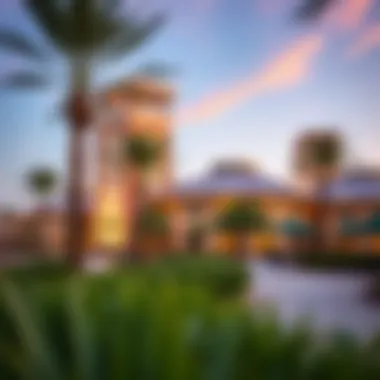
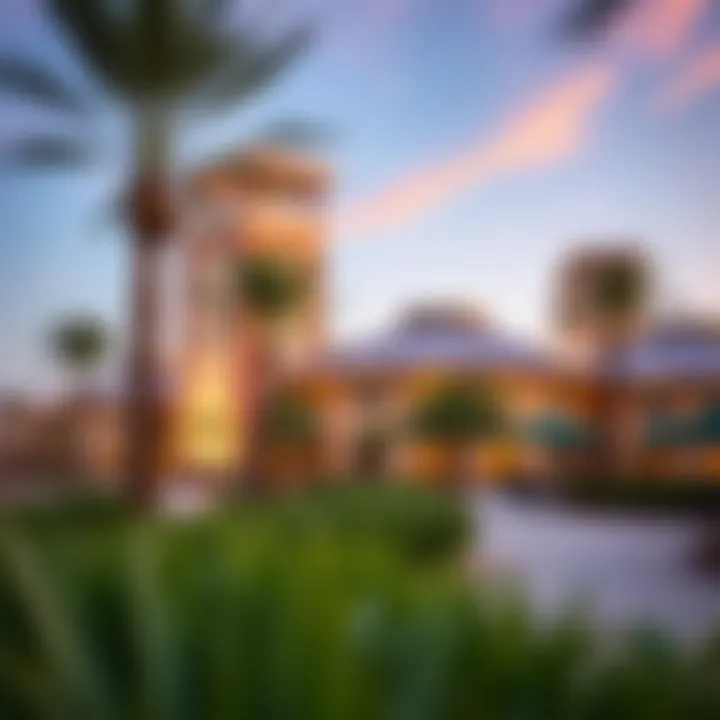
Long-Term Development Goals
Looking ahead, Dubai has outlined specific developmental objectives that will rudimentary influence the future of Jumeirah Village Circle. These long-term goals stem from a broader vision aimed at creating a sustainable and vibrant urban environment.
- Sustainability Initiatives: As environmental concerns gain traction, the Dubai government is likely to push for projects that incorporate green initiatives. This includes eco-friendly buildings, renewable energy solutions, and conservation of resources.
- Infrastructure Expansion: Continued improvements in transportation infrastructure, such as new roads and public transit systems, will enhance connectivity and accessibility. Projects like the Al Maktoum International Airport expansion will ease access to JVC, boosting its attractiveness.
- Community-Centric Development: The emphasis on creating diverse community spaces will foster social integration. Parks, recreational areas, and cultural sites will be essential in nurturing a flourishing community. This commitment can lead to a more engaged and satisfied residential population.
- Technological Integration: Embracing smart city concepts through advanced technologies such as IoT and smart home features will make living in JVC more appealing. This tech-savvy approach can attract a younger demographic eager for modernization.
By aligning with futuristic urban planning principles, JVC stands poised to become a central pillar in Dubai's robust real estate market.
In sum, the future of Jumeriah Village Circle lies in a combination of market adaptability and strategic growth. Investors, homeowners, and developers must keep a close watch on these trends to navigate successfully within JVC's evolving framework.
Community Engagement and Quality of Life in JVC
Community engagement stands as a cornerstone of any thriving urban environment, particularly in a dynamic setting such as Jumeirah Village Circle (JVC). The essence of this community lies not merely in its architectural allure or investment potential but in the lived experiences of its residents. Quality of life, an umbrella term encompassing various aspects of daily living, breathes life into this residential haven and is shaped by community interactions and amenities.
When discussing community engagement in JVC, one must consider how residents interact with one another and the facilities that enhance their everyday lives. As more families and individuals continue to settle in this region, establishing a sense of belonging and mutual respect becomes increasingly vital. Activities and events — from farmer's markets to cultural festivals — foster connections that transcend the usual neighborly nods, creating an interconnected web of relationships.
Moreover, the social fabric of JVC contributes significantly to the overall quality of life. Local parks, recreational areas, and community centers serve as essential gathering points where diverse backgrounds intersect. These spaces not only offer leisure options but also enable residents to engage in sports, arts, and social events, enriched by the cultural plurality of Dubai. It’s crucial to recognize that high quality of life isn't just about infrastructure; it thrives on the vibrancy of community spirit.
Social Infrastructure
A strong social infrastructure is indispensable for enhancing community engagement and, by extension, quality of life in JVC. The term encapsulates the variety of services, amenities, and structures that support social interactions.
Key Components of Social Infrastructure:
- Parks and Green Spaces: Abundant parks in JVC cater to families, fitness enthusiasts, and nature lovers, providing a refuge from the urban hustle. Residents often enjoy weekend picnics or spontaneous playdates, enriching community ties.
- Recreational Facilities: Amenities like gyms, swimming pools, and sports courts are integral. They provide not only recreational opportunities but also venues for leagues and social events, driving collective involvement.
- Educational Institutions: The presence of schools and educational institutions fosters next-gen community engagement. Parents often participate in school events, creating bonds that last beyond the classroom.
Social infrastructure ensures that JVC is not just a collection of buildings but a dynamic community, where physical spaces promote interactions and collaborations among residents. The nurturing of this infrastructure is critical to continuously elevate the quality of life experienced within the neighborhood.
Community Initiatives
Engagement is further amplified through specific initiatives aimed at enhancing the communal experience. These initiatives often reflect the values and aspirations of the residents and can range from organized events to sustainability efforts.
- Events and Gatherings: Regular community events, such as holiday celebrations and cultural festivals, draw participation from all age groups. They allow residents to showcase traditions, cuisines, and art, fostering a sense of unity and appreciation for cultural diversity.
- Volunteer Programs: Community-driven volunteer initiatives create opportunities for residents to contribute to local causes. These might include cleaning drives, support for underprivileged families, or environmental conservation efforts.
- Feedback Mechanisms: Engagement can also take the shape of forums or surveys where residents can voice their opinions on community needs and developments. This creates a feedback loop, allowing domain authorities to adapt to the residents' evolving desires and concerns.
Community initiatives not only aim to enrich the immediate environment but also cultivate a strong sense of identity and pride among residents.
In summary, the interplay between community engagement and quality of life in Jumeirah Village Circle provides a multifaceted view into how urban environments can foster social cohesion. A thriving community serves as the backbone to a vibrant JVC, ultimately resonating with the aspirations of both investors and residents alike.
The End: JVC's Role in Dubai's Empire Development
As we wrap up our exploration on the subject of Jumeirah Village Circle, or JVC, it becomes increasingly clear that this community plays a pivotal role in shaping the urban tapestry of Dubai. JVC does not merely stand as a residential area; it has gradually morphed into a microcosm of investment opportunities and infrastructure development that reflects the broader patterns of growth across Dubai.
The intricate network of residential properties, community amenities, and vibrant social interactions create an environment that's both inviting and functional. Investors eyeing Dubai's ever-evolving landscape find JVC particularly alluring for its multifaceted potential. This locale presents a balanced mix of luxury and affordability, catering to a variety of demographics, from young professionals to larger families.
One cannot overlook the strategic location of JVC. Nestled between bustling hubs, it provides ease of access to key commercial areas and transport nodes, making commute seamless for residents. This trend is particularly worth noting, as the growing accessibility contributes to JVC's appeal among homebuyers and real estate stakeholders.
In addition to its location, the assortment of community amenities significantly enriches life in JVC.
- Parks and recreation areas encourage outdoor activities, fostering a sense of community.
- Educational institutions within and nearby offer options for families looking for quality schooling.
- A variety of dining and retail choices ensure that residents have their daily needs met without venturing too far.
As Dubai continues to mature and expand, the regulatory environment is another element of significance. Understanding local policies and regulations is paramount for those considering investments in JVC. Navigating these waters can be tricky but is essential for securing long-term financial benefits.
JVC's future is promising. Forecasts indicate growth in both property values and infrastructure development, serving as a beacon for potential investors and current homeowners alike. The alignment of long-term development goals with the broader objectives of Dubai's urban planning emphasizes the importance of community initiatives and responsive governance in shaping a desirable living environment.




